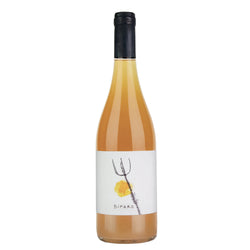Il vitigno Montonico ha una storia antichissima: una fonte risalente agli inizi del 1600 del Catasto Onciario testimonia che già in quel periodo, nel territorio vestino a cavallo tra le province di Teramo e Pescara, alle pendici del Gran Sasso d’Italia e più precisamente nella media valle del fiume Fino, esistesse un vitigno con questo nome, appunto il Montonico che vedeva nel comune di Bisenti gli insediamenti quantitativamente più importanti.
Quando, tra il 1798 e il 1799 le truppe napoleoniche entrarono in Italia, in Abruzzo i francesi si imbatterono nella coltivazione di questo vitigno autoctono della zona dell’entroterra teramano e trovarono il suo vino così fresco, armonico e profumato da ribattezzarlo “le petit champagne” e da chiederne forniture per i vari distaccamenti presenti nella regione.
L’Uva Montonico si presenta con un grappolo grande, allungato, dalla forma corposa e quasi cilindrica e gli acini sono grossi e rotondi con buccia spessa e consistente di colore giallo verdognolo; ha polpa abbondante: il mosto che se ne ottiene è di colore giallo paglierino scarico tendente al verdognolo, fresco e floreale al naso. La piena maturazione avviene tra la fine di settembre e la metà di ottobre e il pregio di questa uva è quello di resistere bene all’appassimento, infatti tradizionalmente si mangiava fresca o passita spesso i grappoli venivano legati e appesi alle travi delle case e lì lasciati appassire fino al periodo natalizio quando si iniziava a "gustare" l'uva.
Il vitigno Montonico ha una storia antichissima: una fonte risalente agli inizi del 1600 del Catasto Onciario testimonia che già in quel periodo, nel territorio vestino a cavallo tra le province di Teramo e Pescara, alle pendici del Gran Sasso d’Italia e più precisamente nella media valle del fiume Fino, esistesse un vitigno con questo nome, appunto il Montonico che vedeva nel comune di Bisenti gli insediamenti quantitativamente più importanti.
Quando, tra il 1798 e il 1799 le truppe napoleoniche entrarono in Italia, in Abruzzo i francesi si imbatterono nella coltivazione di questo vitigno autoctono della zona dell’entroterra teramano e trovarono il suo vino così fresco, armonico e profumato da ribattezzarlo “le petit champagne” e da chiederne forniture per i vari distaccamenti presenti nella regione.
L’Uva Montonico si presenta con un grappolo grande, allungato, dalla forma corposa e quasi cilindrica e gli acini sono grossi e rotondi con buccia spessa e consistente di colore giallo verdognolo; ha polpa abbondante: il mosto che se ne ottiene è di colore giallo paglierino scarico tendente al verdognolo, fresco e floreale al naso. La piena maturazione avviene tra la fine di settembre e la metà di ottobre e il pregio di questa uva è quello di resistere bene all’appassimento, infatti tradizionalmente si mangiava fresca o passita spesso i grappoli venivano legati e appesi alle travi delle case e lì lasciati appassire fino al periodo natalizio quando si iniziava a "gustare" l'uva.



